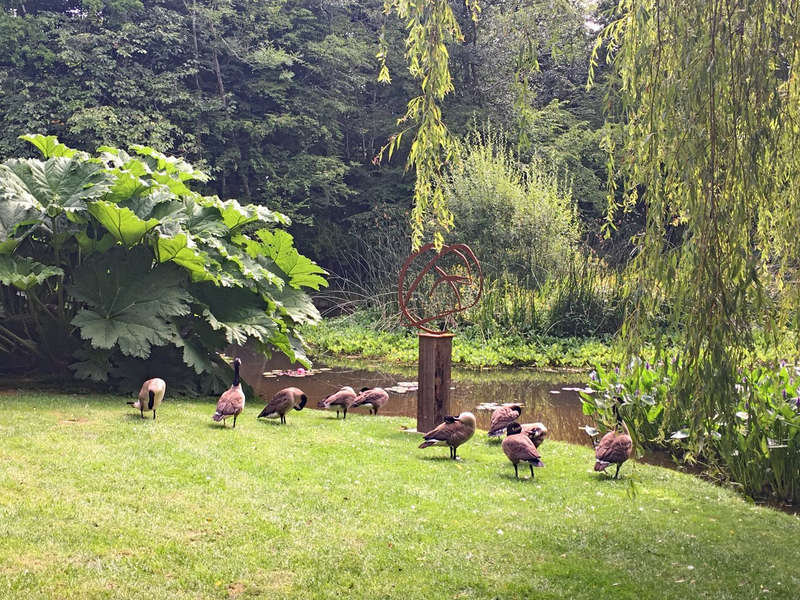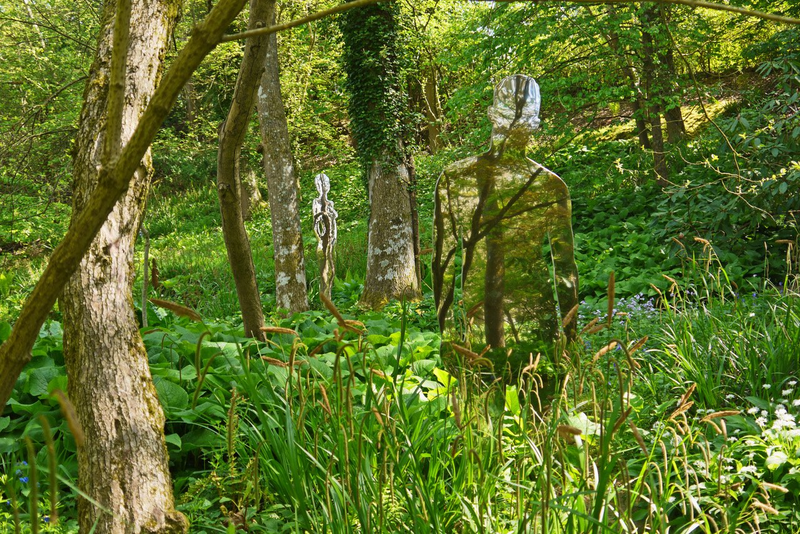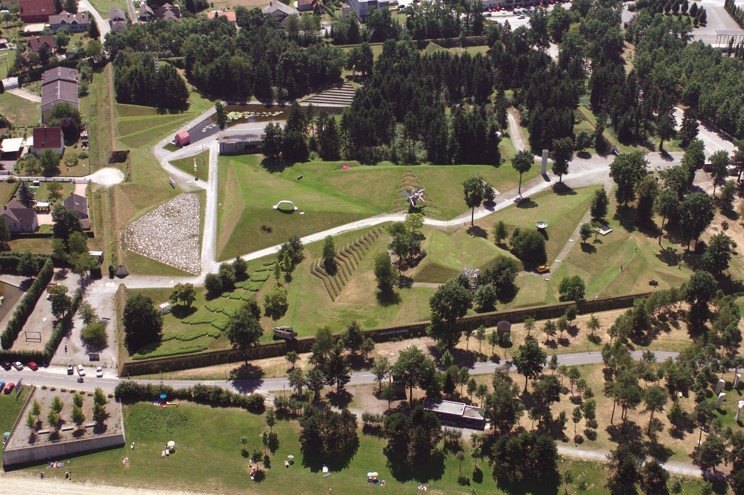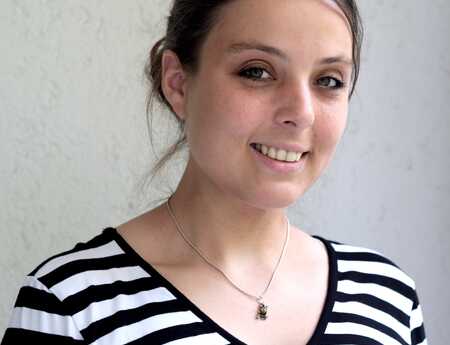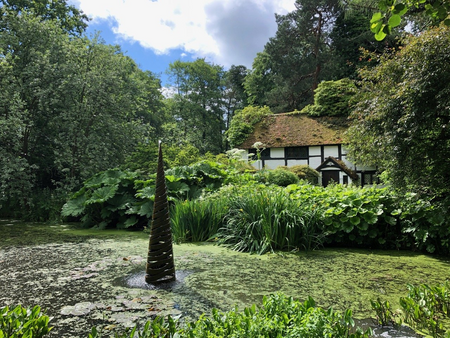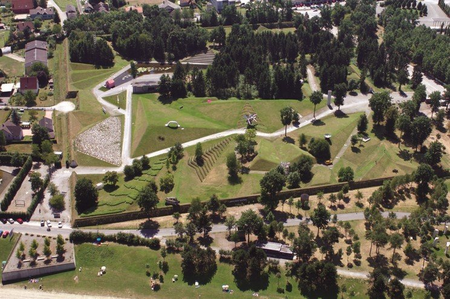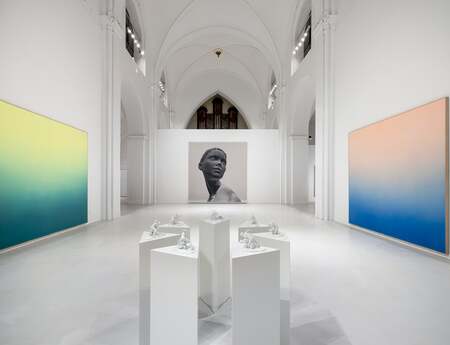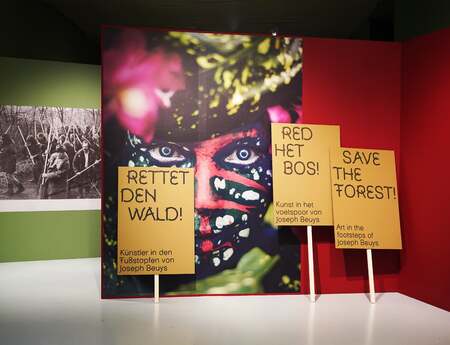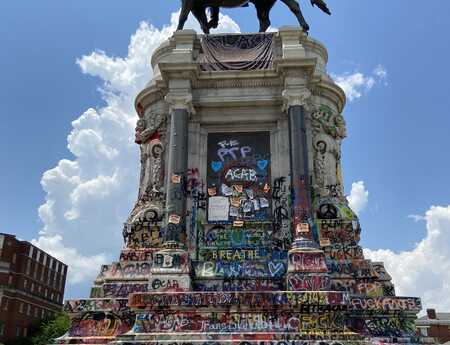Exploring the green world of sculpture
Art in the great outdoors – who could resist this winning combination? In the sculpture network Online Club on the topic of “Sculpture in the Green”, Vikki Leedham of the Hannah Peschar Sculpture Garden in Surrey, England, and Elisabeth Fiedler of the Austrian Sculpture Park near Graz, Austria, gave a taste of what their outdoor exhibitions have to offer. A report.
With the first cool days and autumn approaching, gardens, sculpture parks and outdoor exhibitions all over Europa are preparing for the colder season. However, sculpture network did not want to miss out on one last extensive look at two very special sculpture parks before the winter break. On September 19, 2022, Vikki Leedham and Elisabeth Fiedler took the guests of the Online Club on a virtual tour into their green realms, which take very different approaches in connecting art and nature.
The Hannah Peschar Sculpture Garden, which is overseen and co-curated by Vikki Leedham, is at home in beautiful Surrey, England. It’s a wild green paradise that has about as much to do with the typical English lawn as a balloon has to do with Jeff Koons’ Balloon Dogs: somehow related, but not at all comparable. In her lively talk, accompanied by a multitude of stunning images, which manages to convey the enthusiasm for her workplace even through the means of the screen and across thousands of miles, the co-curator and gallery manager of the Sculpture Garden calls the concept of the garden design “Controlled wildness.”
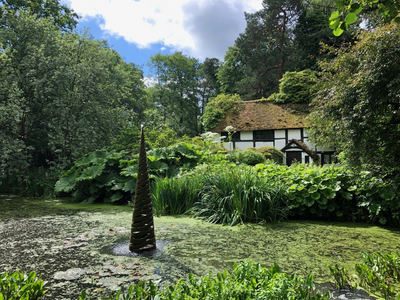
Responsible for the garden layout is Anthony Paul, landscape designer and husband of the namesake Hannah Peschar, who sadly passed away in 2021 – together they are and were the heart and soul of the Sculpture Garden. The couple initially purchased the 10-acre property with the idyllic Black & White Cottage at its center in the early 1980s with no plans for a sculpture park. Rather, they fell in love with the wildly romantic surroundings in the glacial valley, the untamed nature that presented them with a Sisyphean task but cast an irresistible spell on them. With great attention to detail, they threw themselves into the work: Anthony’s design plan consists mainly of exotic green plants – a tribute to the original wilderness of the environment, without many flowering plants or symmetrical arrangement – which he regularly expands and renews to this day.
The idea to use the garden as a stage for a sculpture exhibition came to Dutch-born Hannah Peschar when she attended a ceramics exhibition near Amsterdam in the early 1990s. Due to space constraints, the curator, a friend of Hannah’s, had to move some pieces out of the exhibition rooms to outside, and the sight of these art objects in the greenery gave the art-loving Hannah an idea: what if the works were deliberately integrated into a garden, cleverly placed in interaction with nature? Sculpture parks and gardens were not yet fashionable at the time; art belonged in museums and galleries. But Hannah did not let herself be discouraged: The first exhibition in her garden included about 20 sculptures by students from a local art academy and was a small success.
This success was largely due to Hannah’s eye for placement, which still influences the concept of the exhibition today: in her garden, the works should look as if they belong exactly there, in keeping with the motto: “Art and Nature in Perfect Harmony.” Each sculpture is carefully placed to harmonize with its surroundings: hanging in trees, half-hidden among grasses, embedded in shrubbery and meadows, or installed on the banks of small ponds. In interacting with the garden and local fauna, the works thus open up another, greener dimension.
For the last 39 years, the Hannah Peschar Sculpture Garden has presented annually changing exhibitions, each with more than 100 works by artists from Great Britain and Europe. Currently, Yke Prins, board member of sculpture network, is among them, and following Vikki’s talk she shares with us some of her experience with the Sculpture Garden as an exhibition venue. At the end of her talk, Vikki lets us know with a wink that she is always on the lookout for new contributions; an application from the ranks of sculpture network could be worthwhile.
Full of impressions from the lush green countryside of southern England, this evening’s journey continues to Austria, to the Österreichischer Skulpturenpark (Austrian Sculpture Park) near Graz. This site is all about straight lines and thoughtfully laid-out paths – a planned park, standing in stark contrast to the organized chaos of the Hannah Peschar Sculpture Garden. In an extensive virtual tour, Elisabeth Fiedler, chief curator and passionate about the sculpture park, explains the landscape architectural and curatorial concept behind the exhibition space.
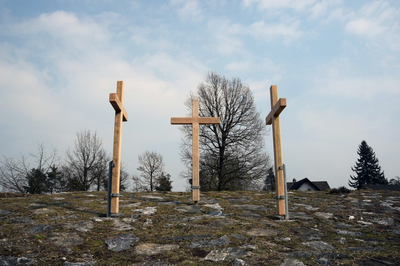
The park is already a work of art in itself: diversely designed with a water lily pond, labyrinth and, particularly impressive, three enormous green pyramids in the center, the park provides the ideal setting for an art collection. The pyramids are the heart of the park and intimately linked to the Steiern region – they are a kind of artistic substitute for the mountains, which of all places cannot be seen from this site, although they are otherwise extraordinarily present in Austria. In the slowly but steadily growing permanent exhibition of the sculpture park, many artists from Austria are represented, in addition to big international names such as Yoko Ono. The nearly eighty sculptures sometimes interact intimately with their surroundings, sometimes they use the park merely as an expressive backdrop or stage. They are all subject to the whims of nature – the weather, the light, the season – and thus always in a dynamic process of changing perception.
For Elisabeth Fiedler, this changeability is what makes outdoor exhibitions so appealing. No matter how carefully one plans a facility – and the Austrian Sculpture Park is extremely carefully planned, with deliberate echoes of the Renaissance and Baroque and a well thought-out spatial division – not everything can be planned in nature. If the environment changes, so does the aura of a work of art. Some of the most interesting works in the park consciously interact with their surroundings, even using nature as a building material. These include Mario Terzic’s Arche aus lebenden Bäumen (Ark of Living Trees, 1998/2010-2011) and Bernhard Leitner’s Espenkuppel (Aspen Dome, 2015), both of which incorporate the growth of trees as an integral part of the work. Here, art literally grows together with nature, its realization intrinsically linked to the flora.
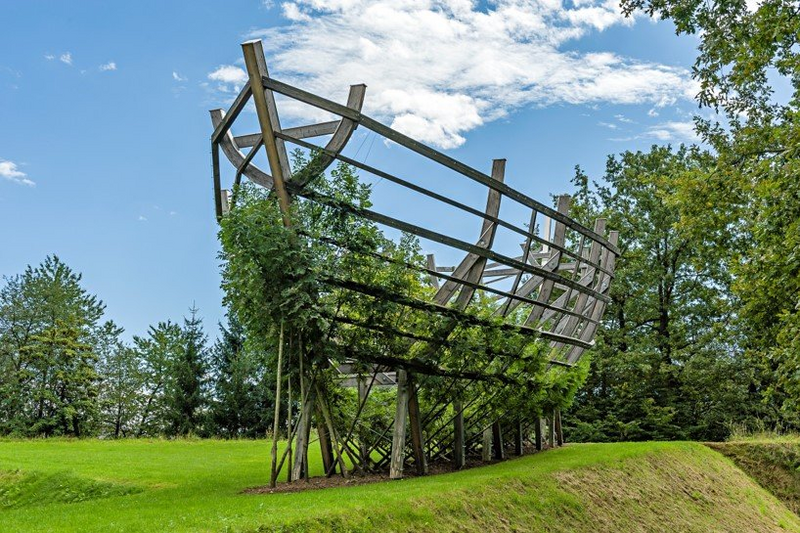
The slow growth of the park since its foundation in 2003 (with its oldest sculpture dating back to 1944) has had the interesting side effect of allowing the particular themes of the time to emerge artistically. Many of the sculptures on display have a socio-critical dimension, allowing viewers not only to travel back in time through art movements of the 20th and 21st centuries, but also to take a trip through the variety of issues that have stirred people over the years. In addition to sculptures that focus specifically on interaction, such as Werner Reiterer’s gesture (2003/04), each individual work thus offers an occasion for reflection and examination. With her extensive presentation, Elisabeth Fiedler was able to give us a wonderful understanding of the diversity of artistic ideas gathered in the Austrian Sculpture Park.
The lively green impressions of this inspiring art evening will certainly be able to save us over the cold season. And one thing is certain: next spring, the Hannah Peschar Sculpture Garden and the Austrian Sculpture Park will definitely blossom again.

